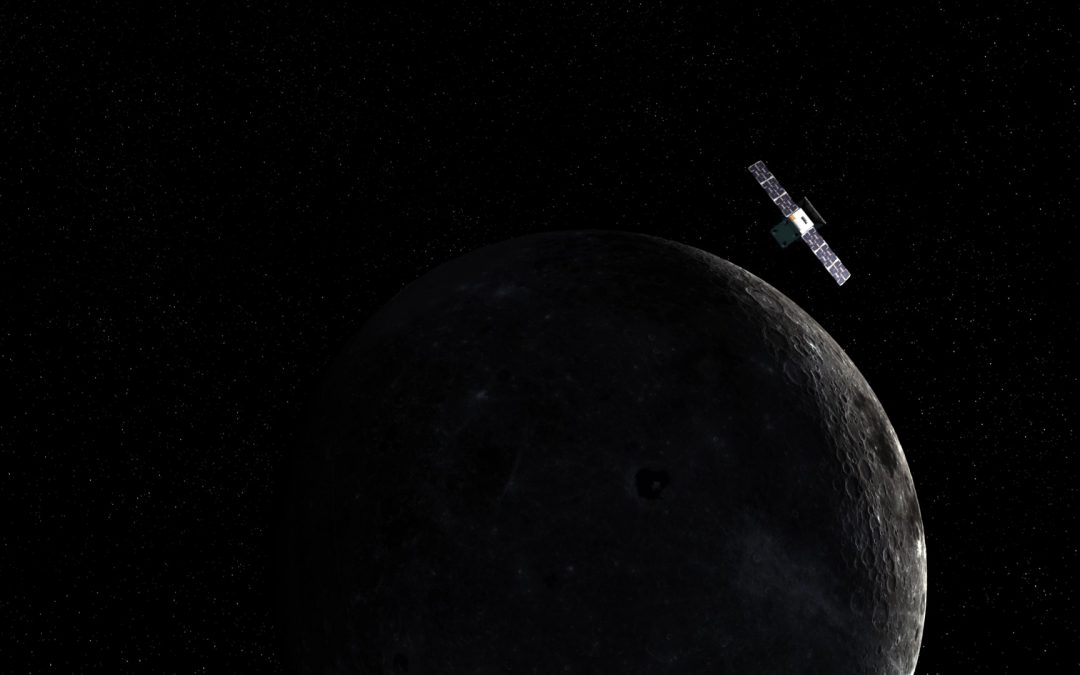Oct 7, 2022 | CAPSTONE Mission
Over the past couple of weeks, the CAPSTONE mission team has been working to resolve an anomaly that occurred early last month and resulted in the spacecraft losing full 3-axis attitude control and entering into a spin stabilized state. Through extensive analysis and evaluation supported by a dedicated team of individuals on the mission team and key partners, the most likely cause of the anomaly was identified as a valve related issue on one of the spacecraft’s eight (8) thrusters. The partially open valve resulted in thrust from the associated thruster whenever the propulsion system was pressurized. To attempt a recovery from this condition, the mission team conducted multiple tests on the vehicle and evaluated extensive telemetry and simulation data and then formulated a plan for attempting recovery of the vehicle’s full 3-axis control. (more…)
Sep 30, 2022 | CAPSTONE Mission
On September 21st, we provided an update on the CAPSTONE mission. Below is a new update. (more…)
Sep 21, 2022 | CAPSTONE Mission
On September 15th, we provided an update on the CAPSTONE mission. Below is a new update. (more…)
Sep 15, 2022 | CAPSTONE Mission
On September 12th, we provided an update on the CAPSTONE mission. Below is an update. (more…)
Sep 12, 2022 | CAPSTONE Mission
On September 10th we provided an update on the CAPSTONE mission and below are updated details on the situation. (more…)
Sep 10, 2022 | CAPSTONE Mission
The CAPSTONE spacecraft was executing a planned trajectory correction maneuver Thursday evening, September 8th. We have since obtained telemetry that confirms the vehicle suffered an anomaly near the end of the planned maneuver and is currently in safe mode. The CAPSTONE mission team has good knowledge of the state and status of the spacecraft. The anomaly resolution has been enabled by the exceptional support of the team at NASA’s Deep Space Network. The mission operations team is in contact with the vehicle and working to resolve the anomaly. As resolution efforts progress, more updates will be provided. The spacecraft remains on its planned course to the Moon.

Aug 26, 2022 | CAPSTONE Mission
First Ever Commercial Satellite to Fly this distance from Earth – Moon Mission for NASA continues to make history.
Westminster, CO (August 26, 2022) Advanced Space LLC., a leading space tech solutions company with breakthrough navigation technology, applauds their team and mission partners as apogee is achieved for its CAPSTONE mission commissioned by NASA. Apogee, the furthest point at which the microwave-sized small satellite is from Earth, is at 1,531,949 km or 951,909 miles away from Earth at around 1:35:52 pm MT on Friday, August 26th. The dominance of the Sun’s gravitational pull has served as one of the guiding forces to allow the extreme distance of the spacecraft. This is one of the features of the ballistic lunar transfer (BLT) – the transfer method being used by CAPSTONE to reach the unique orbit around the Moon. The CAPSTONE spacecraft will now head towards the Moon. The CAPSTONE mission will test the lunar Near Rectilinear Halo Orbit (NRHO), the intended orbit for Gateway, a lunar space station that will support NASA’s Artemis program. CAPSTONE has contributed insights and shared data with Artemis 1 secondary payloads that will assist them in their mission operations. (more…)
Aug 19, 2022 | Papers & Presentations
Presented at the 36th Annual Small Satellite Conference 2022
Advanced Space: Tom Gardner, Brad Cheetham, Jeff Parker, Alec Forsman, Ethan Kayser, Michael Thompson, Conner Ott, Lauren DeMoudt, Matt Bolliger, Arlen Kam
Terran Orbital: Keith Thompson, Tristan Latchu, Rebecca Rogers
Stellar Exploration: Brennan Bryant, Tomas Svitek
ABSTRACT
The cislunar environment is about to get much busier and with this increase in traffic comes an increase in the demand for limited resources such as Earth based tracking of and communications with assets operating in and around the Moon. With the number of NASA, commercial, and international missions to the Moon growing rapidly, the need to make these future endeavors as efficient as possible is a challenge that is being solved now. Advanced Space is aiming to mitigate these resource limitations by enabling spacecraft in the cislunar environment to navigate autonomously and reduce the need for oversubscribed ground assets for navigation and maneuver planning. (more…)
Aug 11, 2022 | CAPSTONE Mission, Community
CAPSTONE Mission is acknowledged for cutting-edge efforts of recent and ongoing technical innovation for Small Satellites
Have you heard? We won Small Satellite Mission of the Year! It’s been a long journey from concept to launch, and we still have quite a journey ahead of us as we continue to the Moon, but CAPSTONE could not have gone so far without the support of our community. (more…)
Aug 5, 2022 | CAPSTONE Mission, Community
Congratulations KPLO on yesterday’s launch! We’ll see you out there!
CAPSTONE will be leading KPLO by around 1 month on its way to the Moon. As more missions head to the Moon, safety and transparency are key. We are working with partners to make sure operations in cislunar space are sustainable for the long term.
(more…)
